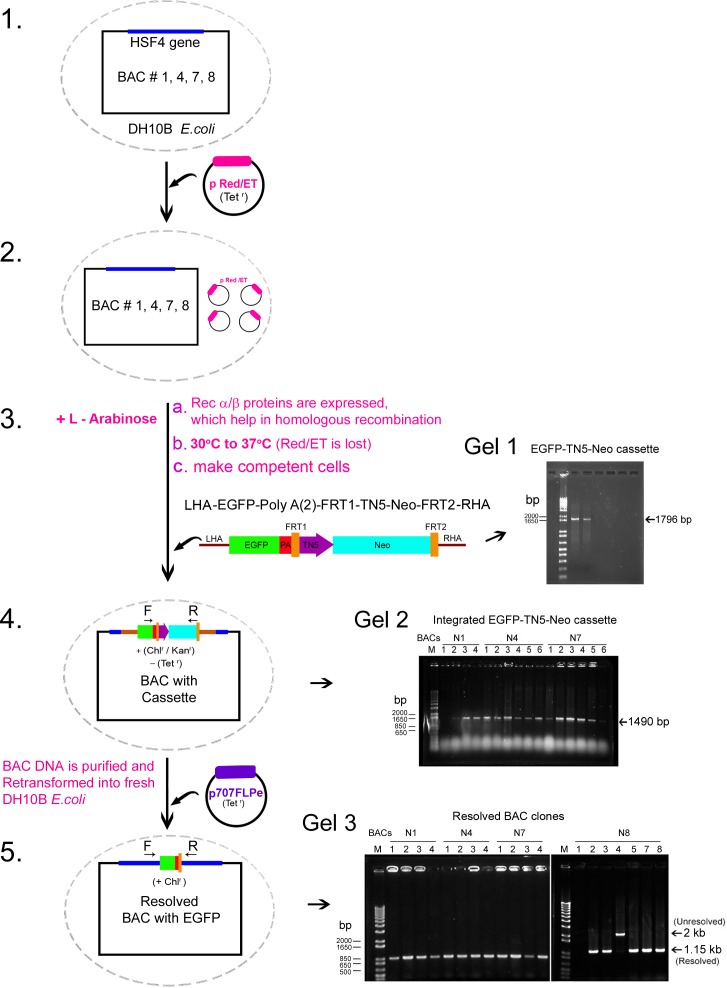Figure 1.
Recombineering EGFP into the DNA binding domain of the Hsf4 gene in various BACs. (1) Four mouse BACs (mHsf4 BAC # N1, N4, N7, and N8) of various lengths (see Fig. 2), containing the Hsf4 gene were maintained in E. coli strain DH10B. (2) The pRed/ET plasmid Tetr59 was transformed into E. coli harboring Hsf4-BAC DNA. (3) The recombinase functions (Rec α/ Rec β proteins) from this plasmid were induced by L-arabinose (10%) overnight and the culture was shifted to 37°C that inhibits the replication of the plasmid. The cultures were selected on Chlr/Tets plates and transformed with the purified linear targeting cassette DNA fragment (LHA-EGFP-PolyA-PolyA-FRT1-Tn5-neo-FRT2-RHA) (Gel 1). (4) The Chlr and Kanr colonies were grown and screened by colony PCR (1490 bp amplicon) (Gel 2). (5) The recombineered BAC DNA with the targeting cassette (Hsf4-EGFP-PolyA-PolyA-FRT1-Tn5-neo-FRT2) was purified and retransformed into fresh DH10B E.coli (Chlr/Kanr) and then transformed with p707FLPe. The FLP expression, which is repressed at 30°C was induced at 38.5°C to resolve the TN5-neo-FRT cassette, the p707FLPe is lost at this temperature. The resolved and unresolved clones were identified by colony PCR: unresolved (2 kb amplicon) and resolved (1.15 kb amplicon) (Gel 3). Finally, the resolved BAC DNA with EGFP-PolyA was purified and injected into the pronuclei of 0.5 day, one cell–staged embryos (C57Blk6 ) for generating the transgenic mice.34

